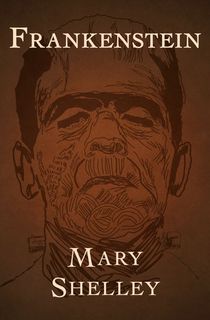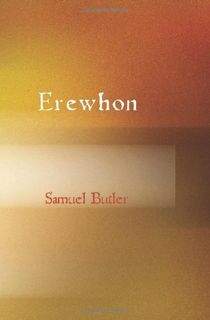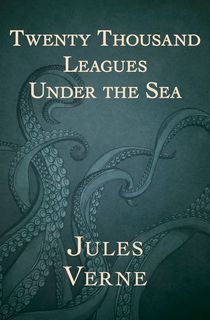The scientific and industrial revolutions in Europe hugely influenced the art and literature of its time, sowing the seeds of the science fiction genre as we know it today.
But like with fantasy, the roots of science fiction can be traced back even further—plenty of ancient epics such as The Epic of Gilgamesh, or the Ramayana and the Mahabharata feature futuristic elements in their narrative, perhaps highlighting how the imaginative or speculative urge is almost a primordial impulse among humankind. Another early proto-SF work, A True Story by Lucian of Samosata, written in the 2nd century AD, featured a group of travelers visiting the Moon, getting embroiled in an interstellar war, meeting well-known figures from history and myth, and exploring outlandish realms—all recognizable SF-nal elements.
While some scholars argue that it was written to parody exaggerated or untrue accounts of travel writing, both the inventiveness of the plot as well as the urge for social commentary find their way to the early SF works of the 19th century as writers grappled with the ramifications of new technology, scientific advancements, and a rapidly evolving society.
In a way, SF has always been concerned with the world we live in—not as it is, but as it could be, for better or for worse. Whether you’re a sci-fi aficionado or simply curious about genre roots, these classic science fiction books from the 19th century are sure to take you on an educational and entertaining voyage through the oceans of time.

The Time Machine
If you’re up for an unforgettable timey-wimey adventure to a far-future Earth, give The Time Machine by H.G. Wells a try. With the help of a time machine, a Victorian traveler ventures roughly 800,806 years into the future and finds that humanity has devolved into two distinct species—the childlike, surface-dwelling Eloi and the nocturnal, subterranean Morlocks.
The two species easily function as an allegory for class inequality, and Wells enlivens his tale with the narrator’s beautiful and heartbreaking relationship with Weena, a fellow Eloi that he rescues.
Wells also wrote other futuristic works, including The War of the Worlds (1898) that tackles an alien invasion, and The Island of Doctor Moreau (1897) wherein a scientist experiments with creating human-like hybrids.

Frankenstein
First published in 1818, Mary Shelley’s Frankenstein remains a gripping and layered read, told in an epistolary format, wherein a young scientist attempts to awaken the spark of life in a cobbled-together corpse and then abandons his creation, leading to disastrous consequences. The story was conceived in the summer of 1816 where Mary, Percy Shelley, John Polidori, and Lord Byron were staying together at a mansion in Geneva and competed to narrate the best ghost stories to pass the time.
Clearly, Mary Shelley won that contest. The themes of motherhood, child-rearing and responsibility that inform the story of Frankenstein remain relevant some two hundred years later. Shelley also published The Last Man in 1826—it’s a lesser-known work but way ahead of its time (literally and figuratively), set in a dystopian, apocalyptic world, besieged by a pandemic.

Erewhon
If you haven’t already figured it out, the title of Samuel Butler’s novel is actually “nowhere” spelled backwards. It’s a sharp satire of Victorian English society, set in a seemingly Utopian world with science fiction motifs. Influenced by the strides of the industrial revolution, Erewhon is also one of the earliest books to explore the idea of machines and robots becoming sentient.
Now that artificial intelligence has become such a buzzword, it might be a good time to revisit Butler’s profound and prescient work.

The Strange Case of Dr. Jekyll and Mr. Hyde
In folklore, doppelgangers are often associated with bad luck. In this Gothic novella, Robert Louis Stevenson (noted for his tales of daring and adventure such as Treasure Island and Kidnapped) digs deep into the idea that all of us may have a shadow self that we hide from polite society. The story follows Gabriel John Utterson who investigates a series of strange happenings associated with his old friend, Dr Henry Jekyll that seem inexplicably linked to the criminal Edward Hyde.
Inspired by the hypocritical social mores of Victorian society that often compelled individuals to repress their true desires, and the theories of the unconscious that were being circulated, Strange Case of Dr Jekyll and Mr Hyde is a deep dive into the darkest reaches of the human psyche.

Twenty Thousand Leagues Under the Sea
Prolific French novelist Jules Verne was heavily influenced by the technological developments of his time that inspired the surreal and SF-nal elements in many of his novels. If you’re unsure of which book to kickstart your Verne journey, you can try Twenty Thousand Leagues Under the Sea wherein Captain Nemo and his crew aboard the Nautilus (an underwater vessel not unlike today’s submarines) explore the deepest and farthest reaches of the seas, as part of their epic voyage.
Given that even in the 21st century, more people have been to the moon than to the Mariana Trench (the deepest point on the Earth’s surface), Jules’s story of an underwater voyage still remains more fiction than fact.

Flatland
Edwin A. Abbot’s novella is an early example of just how gloriously inventive and crazy the genre of science fiction can be. At first glance, it may seem to be just another parody of Victorian society, but it’s actually deeper than that, conceived with mathematical precision and a wryly humorous style, exploring the idea of multiple dimensions and geometric forms.
The narrative follows the misadventures of one befuddled “Square” as he journeys across Pointland, Lineland and Spaceland—offering the readers a chance to imagine worlds with lesser or more dimensions, while also examining gender roles and social prejudices through the metaphors of geometry.

